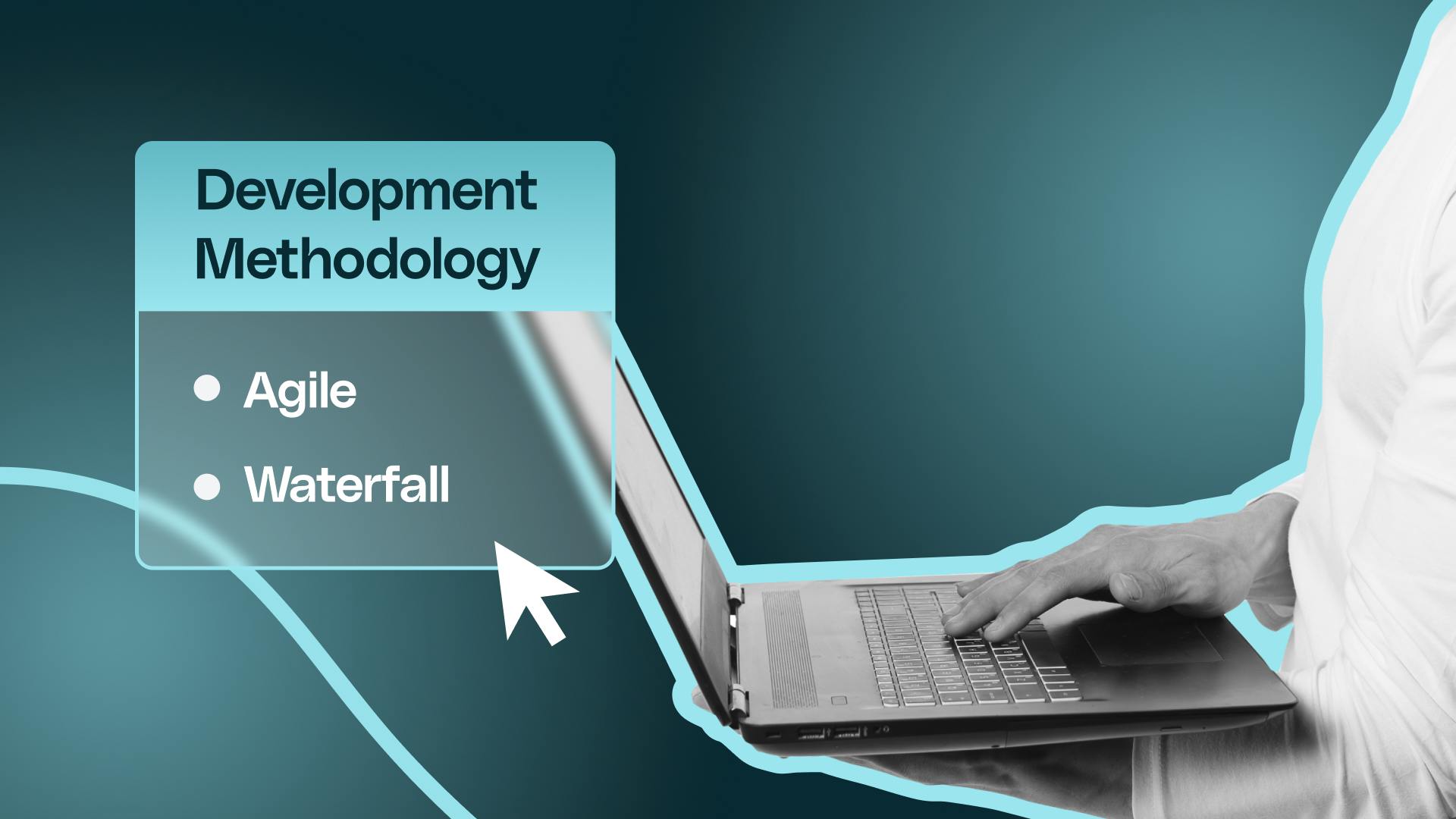Agile vs. Waterfall: How to Choose the Right Development Methodology
Dive into the differences between Waterfall and Agile project management methodologies to help you choose the right one for your team.

Managing a product development team and aligning stakeholders’ expectations with your team’s is certainly not easy.
That’s why, when building a product from scratch, having a dedicated Project Manager helps you set proper product requirements, deadlines, and deliverables and build a bridge between your developers and your client. Without good project management, chaos arrives.
In this article, we’ll dive into the differences between Waterfall and Agile project management methodologies to help you choose the right one for your team.
What is the Waterfall model?
As its name indicates, the Waterfall methodology flows from top to bottom. It means that all product development stages are isolated. You complete one, then you move on to the next one. Simple.
It’s a linear and rigid development process in which teams cannot revisit a previous stage once completed.
Considering the following stages:
1. Requirements
2. Research
3. Design
4. Development
5. Testing
6. Deployment
7. Maintenance
Developers will go through all Waterfall methodology stages, following a clear path forward. This methodology can only work in projects where the end goal is clear and defined right at the start.
It’s a very hands-off type of work where flexibility is low and interaction with the customer is limited. Using Waterfall, you interact with clients and stakeholders before the project starts and after its delivery/completion.
What is the Agile Model?
Around the 1990s, developers started rejecting Waterfall’s rigid and traditional project management methodology, leading to the creation and adoption of Agile and other methodologies that offer more flexibility.
Unlike Waterfall’s linear top-to-bottom process, Agile project management is about continuous releases and iterative software development where customer feedback is consistent throughout all stages. It offers the ability to adjust during each development stage and adapt to feedback and technology changes.
For Agile to work, teams should perform with shorter-term deadlines and more deliverables. In Agile, the role of the project manager is essential as it defines the project’s direction based on all stakeholders involved.
Agile is the best methodology for projects that require fast responses and changes, allowing your development team to iterate during the whole process and incorporate changes even in later stages.
How to choose the right methodology for your team
Both methodologies have pros and cons. But the main difference between both lies in the flexibility of which changes can be made throughout the development process. Waterfall is linear, while Agile encourages iteration and feedback.
Choose Waterfall when:
- Your project has a fixed timeline which was set right from the beginning;
- The client’s end goal is established, not requiring ongoing collaboration;
- Your project is planned ahead of time - no need to go back and forward;
- The budget is fixed, and there is no room for changes.
Choose Agile when:
- Your project’s timeline adapts as development progresses;
- Your client wants to be involved and provide feedback throughout;
- Your project is subject to different directions and changes;
- The budget is flexible, encouraging experimentation.
- Delivering a minimum viable product quickly is a must.
- You need to reduce project risks.
- Collaboration and communication within cross-functional teams is required.
As nearshore consulting partners for several IT companies, at HumanIt, we often use Agile project management methodologies to ensure our clients’ projects run smoothly. Our process includes assigning a dedicated PM to help manage the complete iterative development process and sprint planning.
If you need help choosing the best methodology and technologies for your project, reach out here.
Article written in collaboration with Priscila Correia.